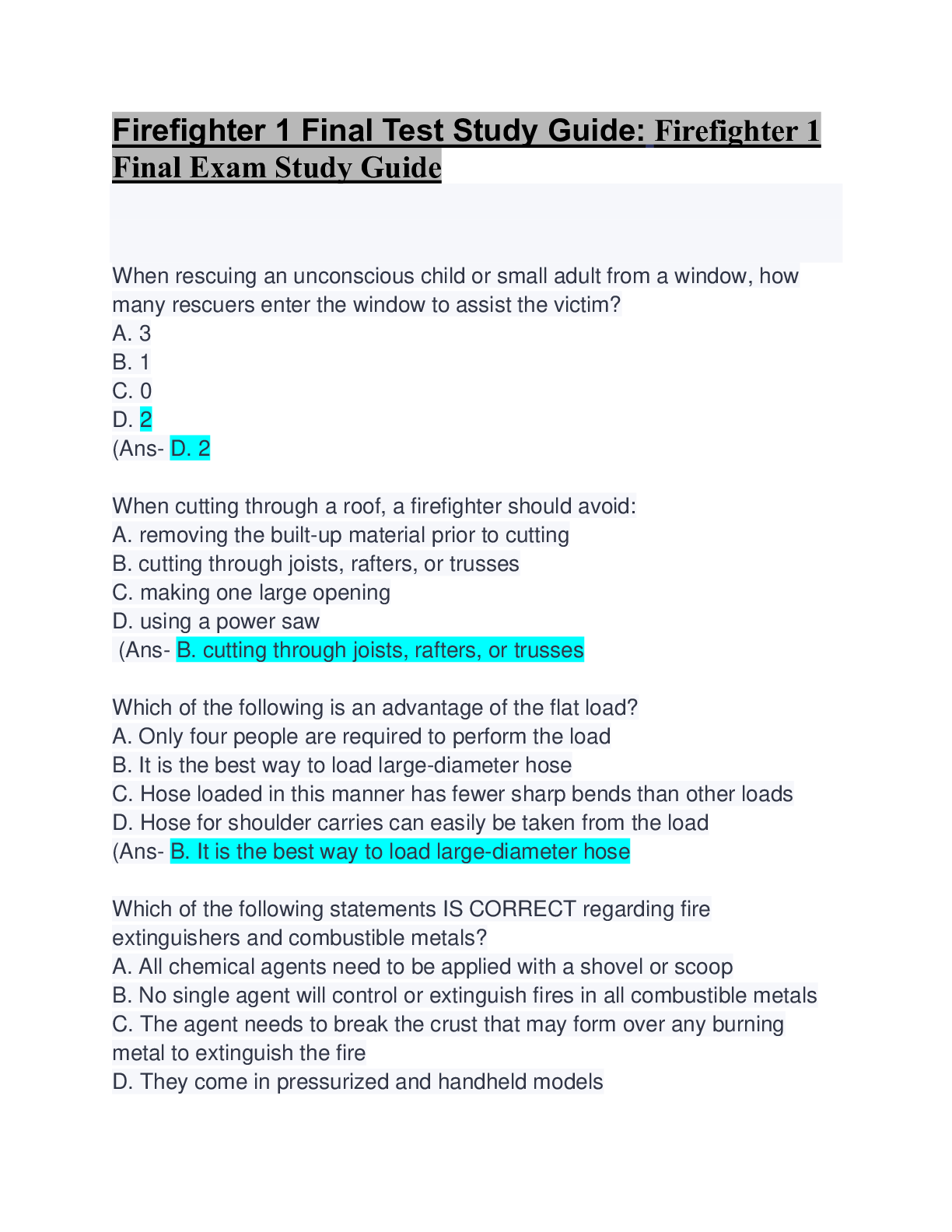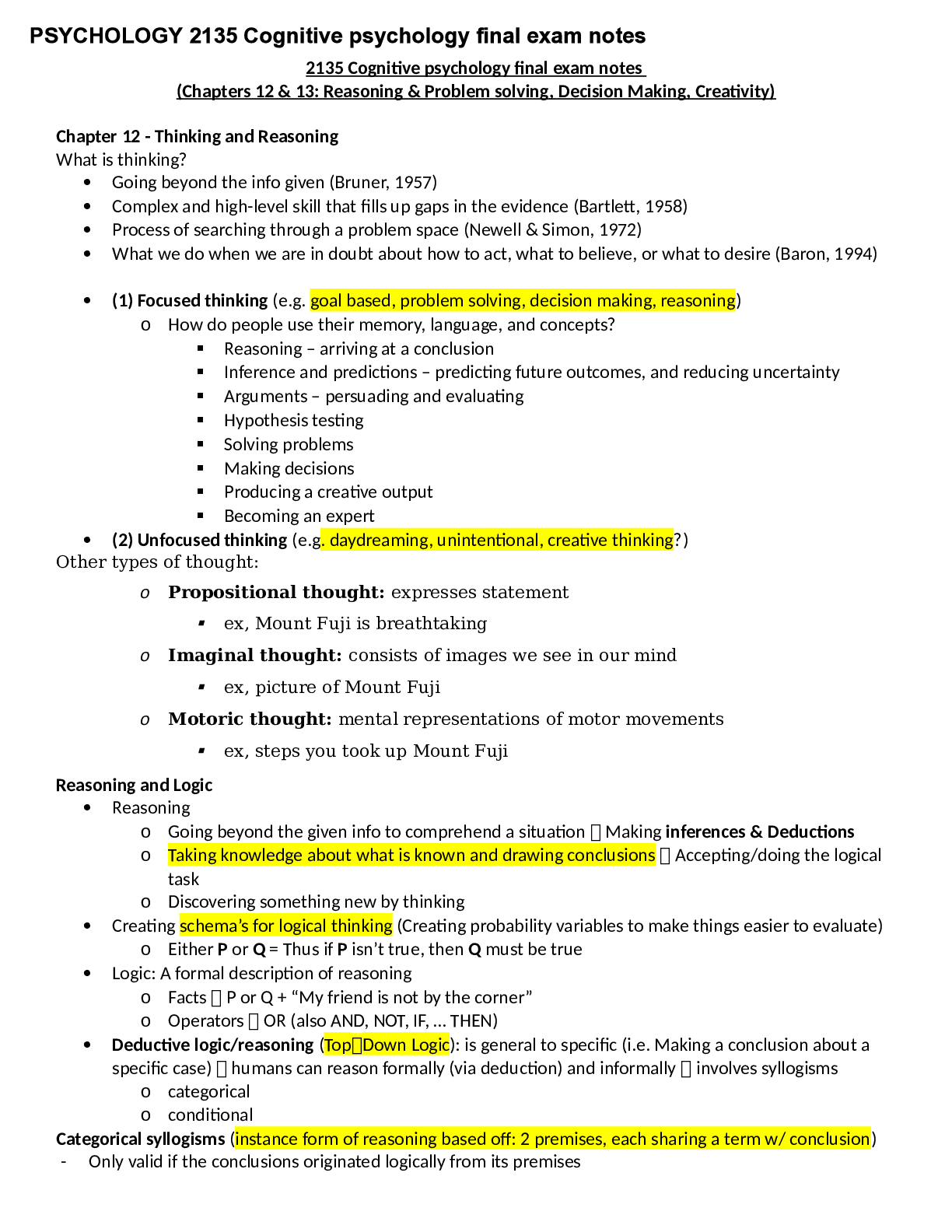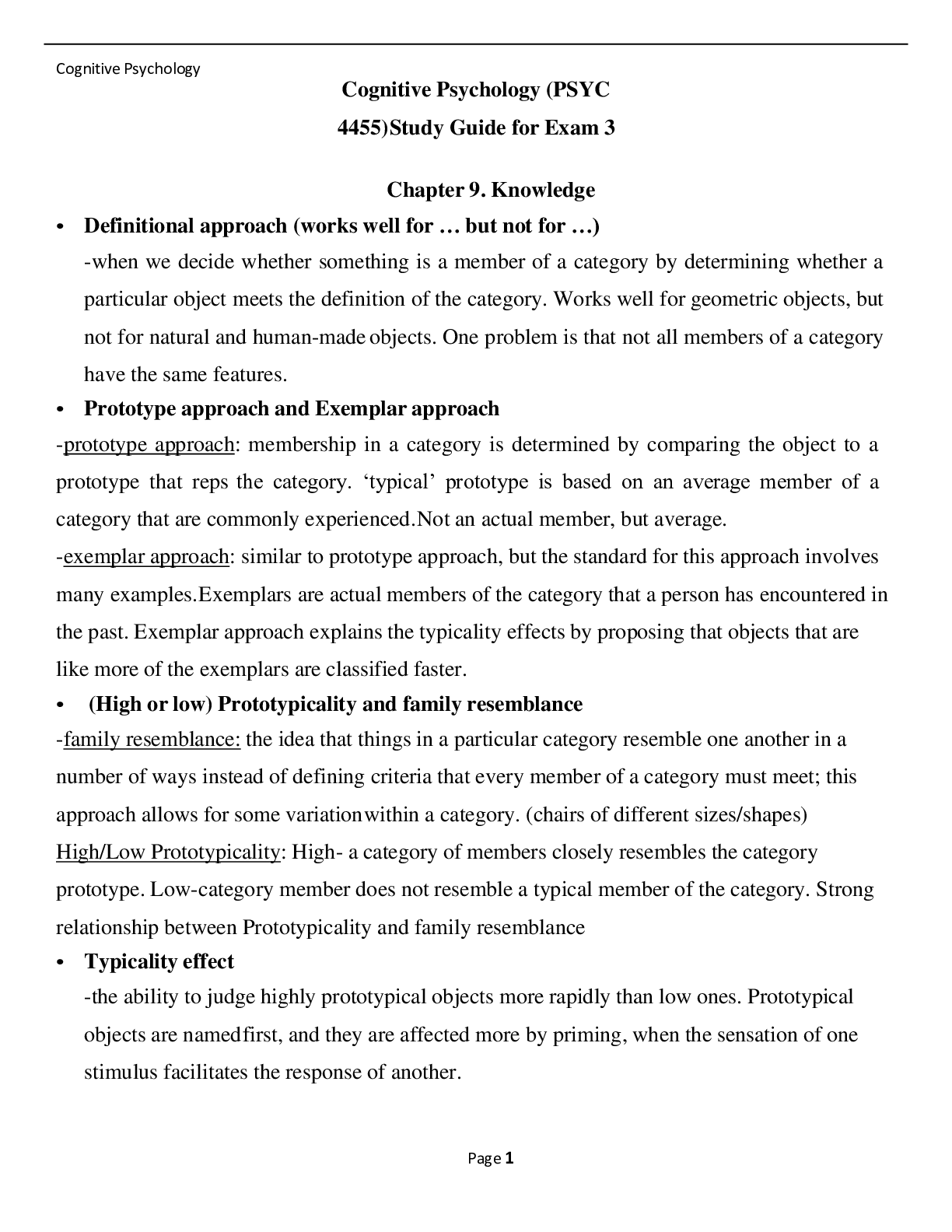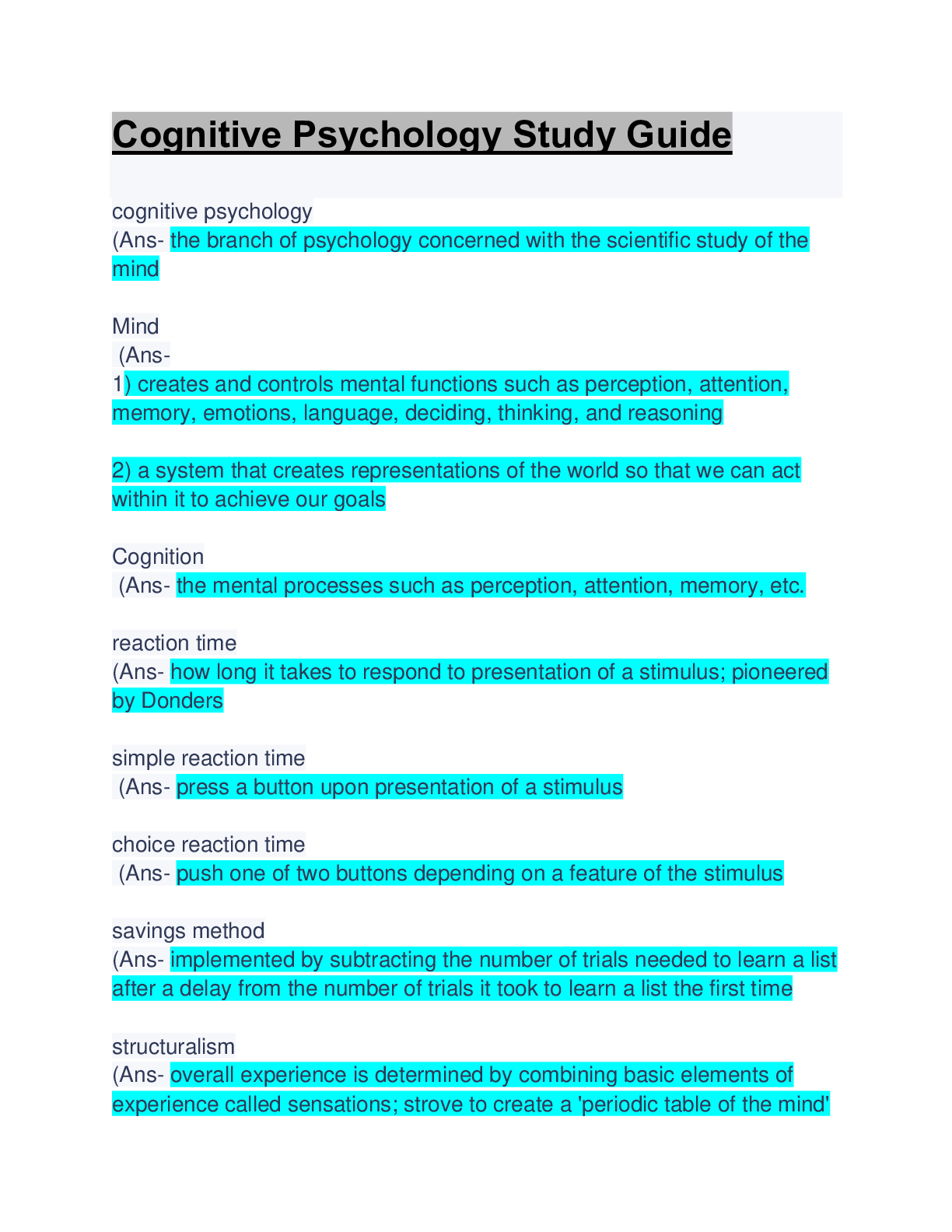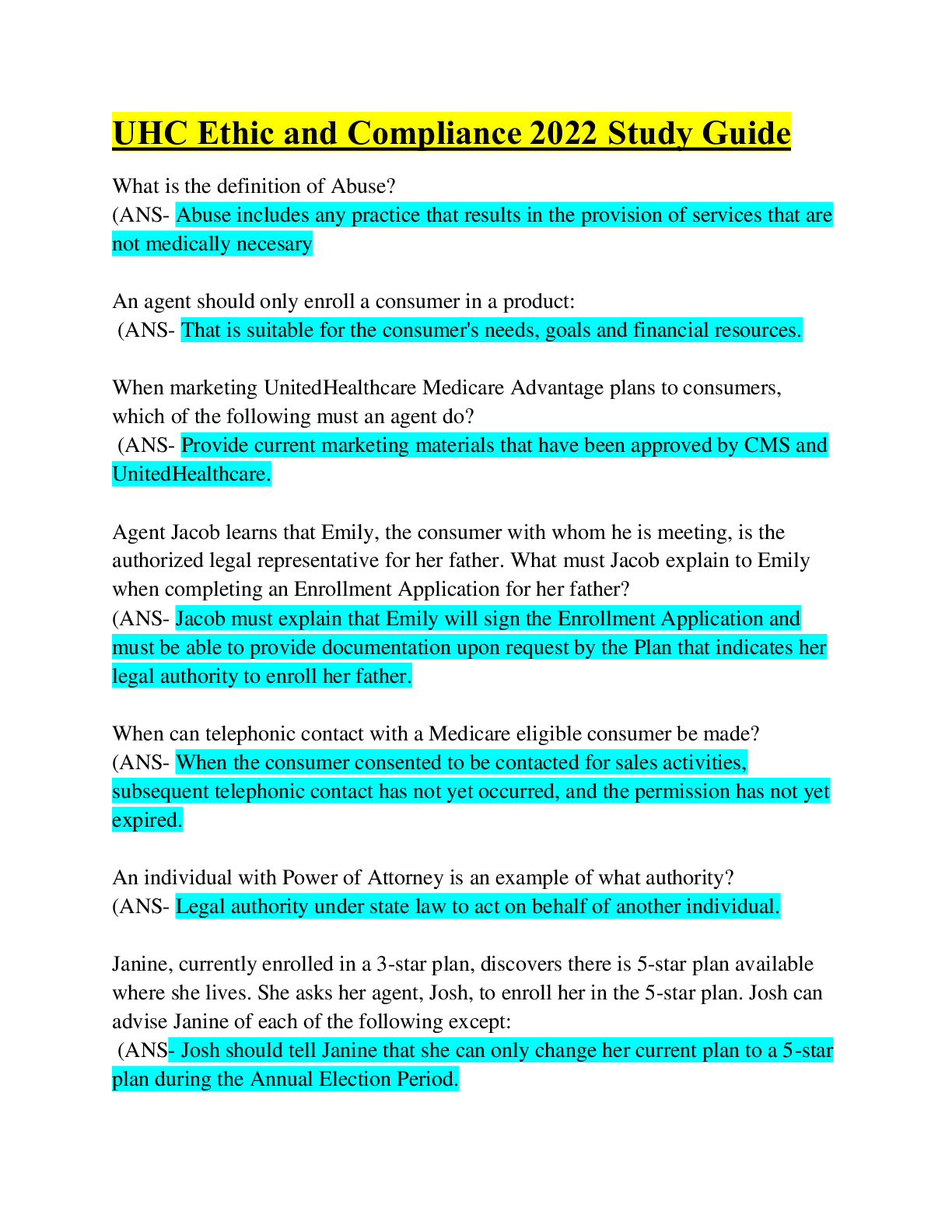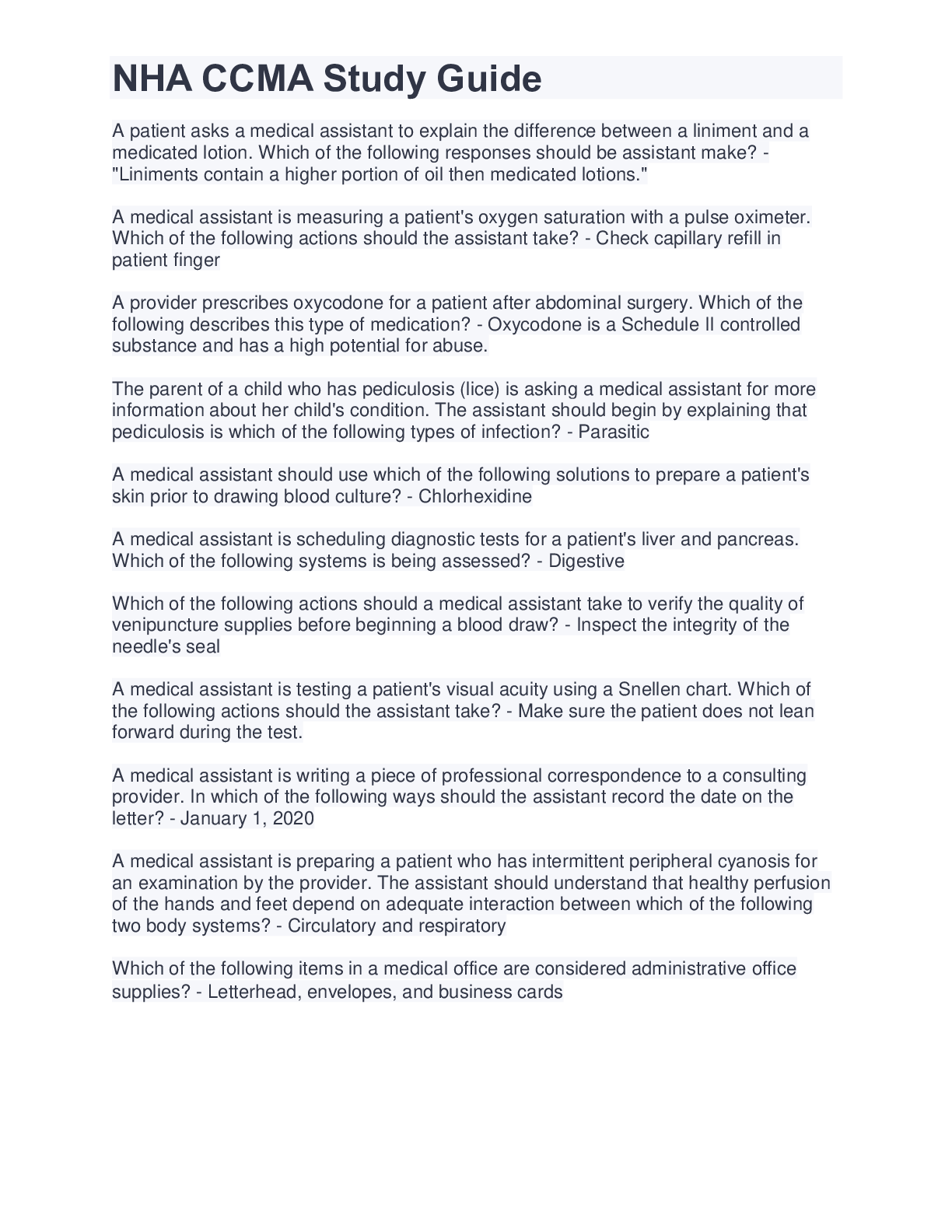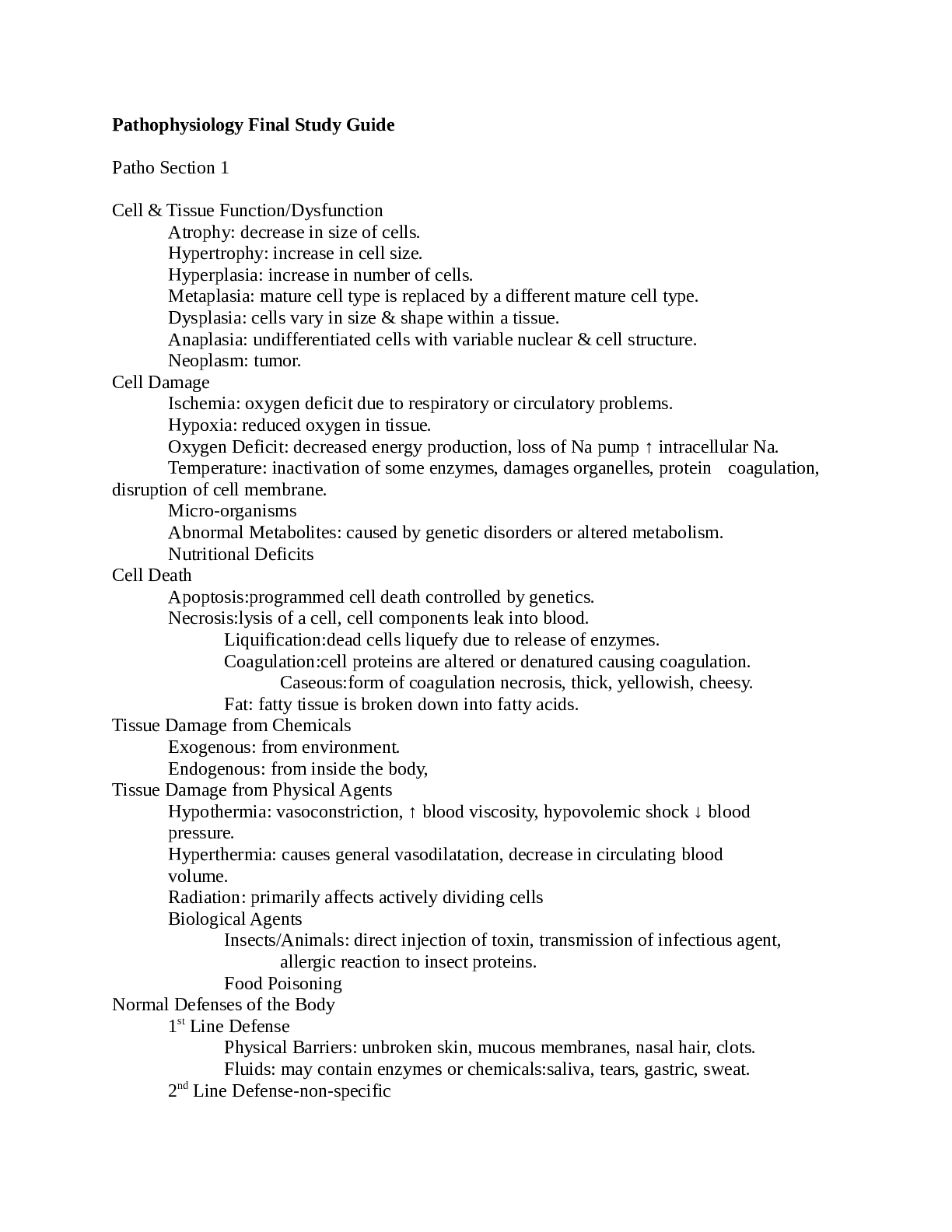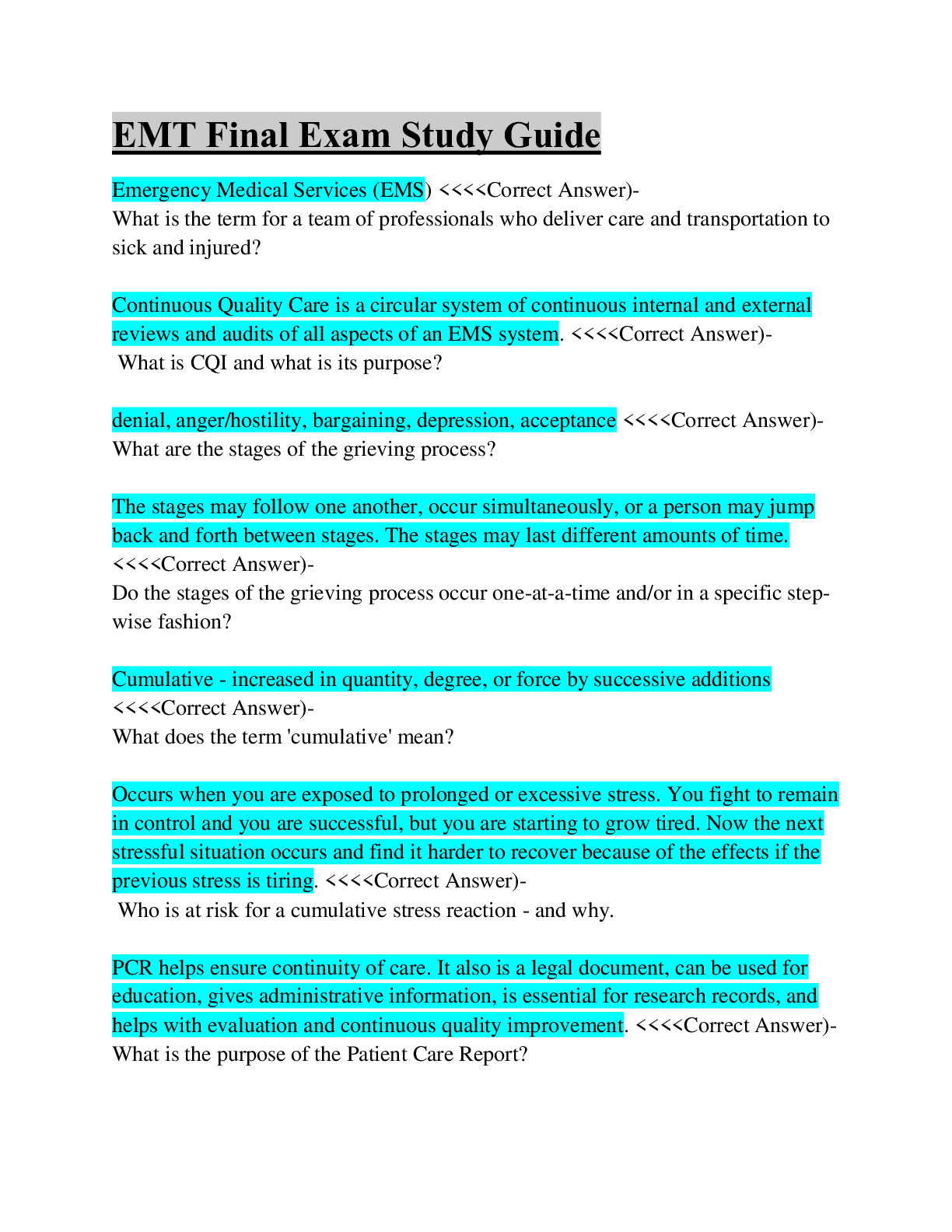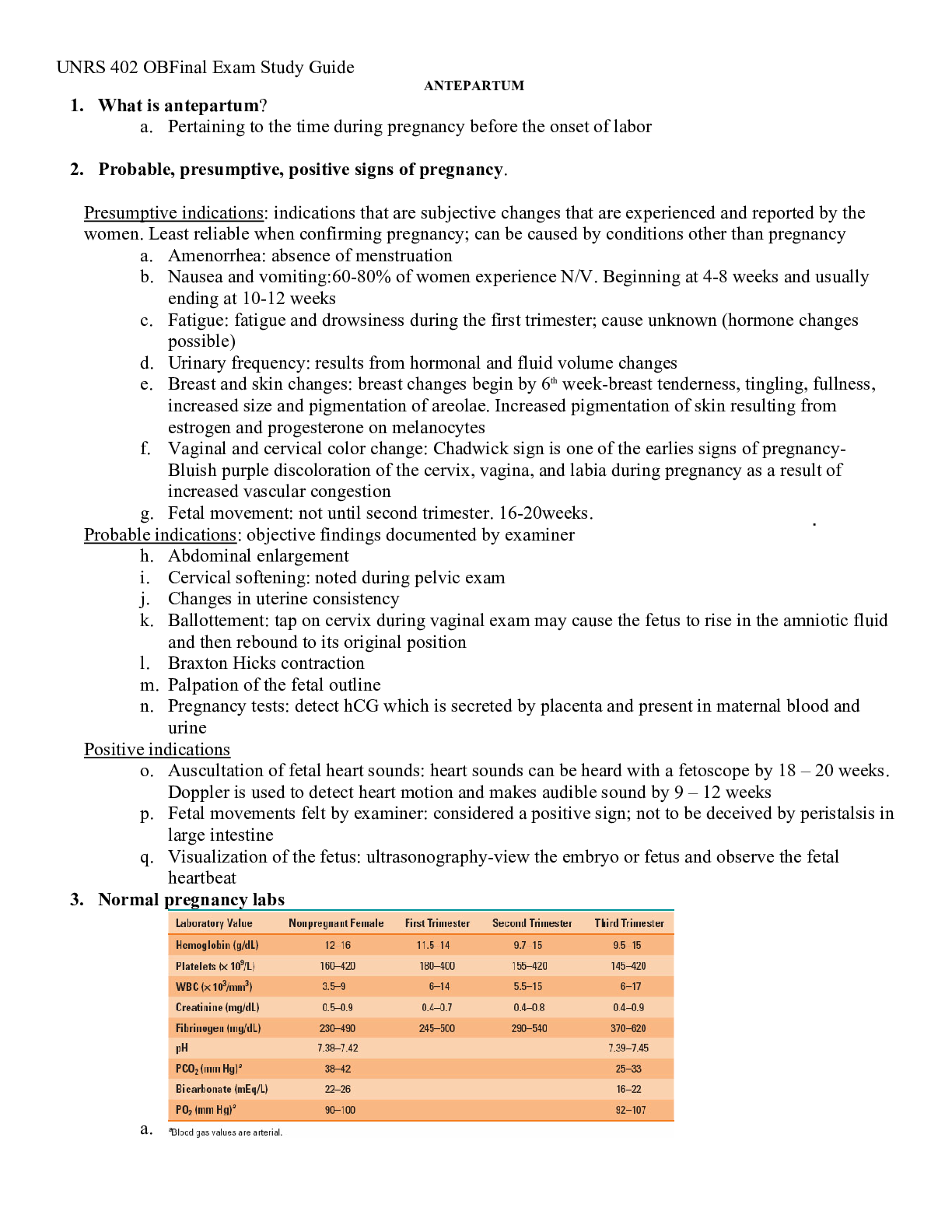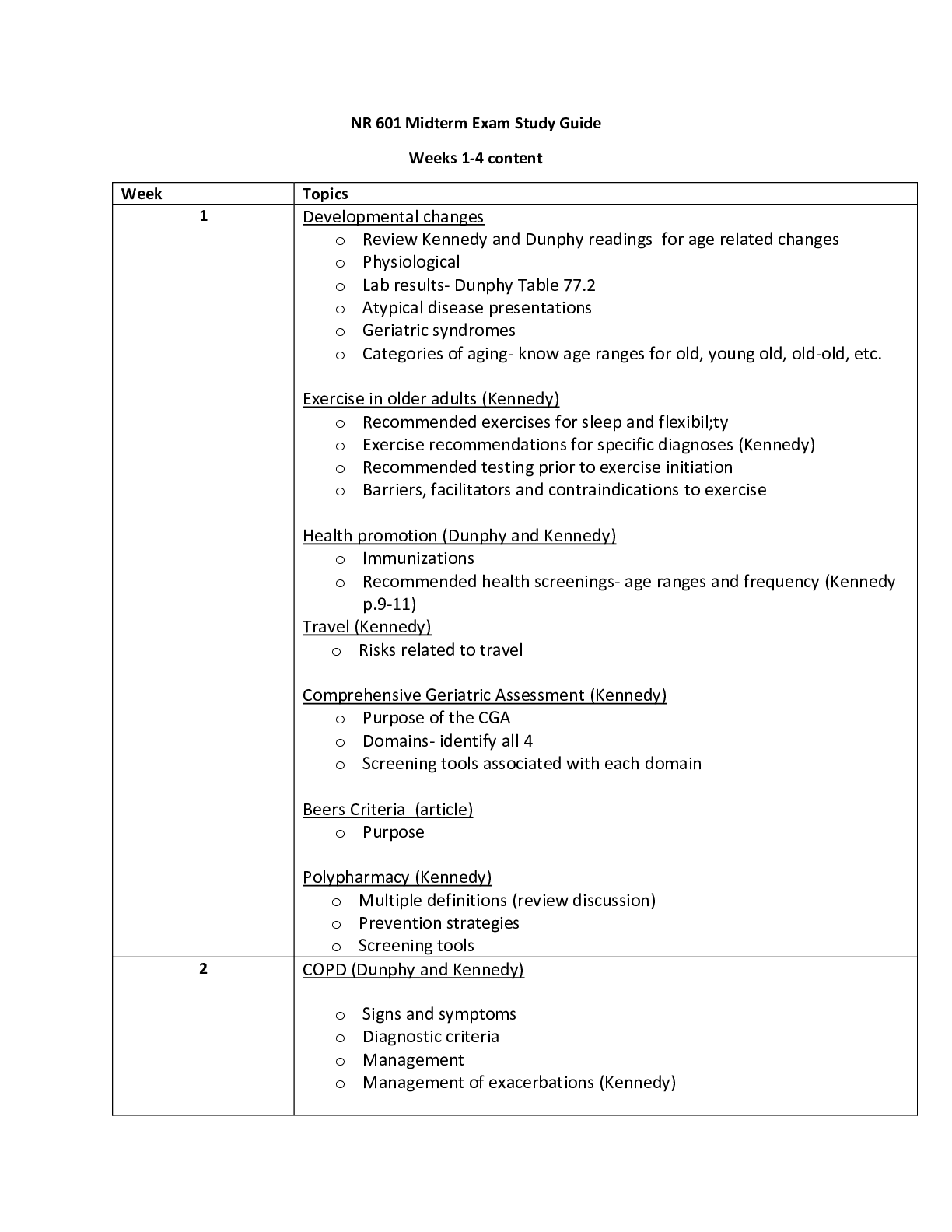Health Care > STUDY GUIDE > HESI OB Exam Study Guide Newborn: Updated A+ Guide Solution (All)
HESI OB Exam Study Guide Newborn: Updated A+ Guide Solution
Document Content and Description Below
Respiratory transition in the newborn ➢ Respiratory function • Established when cord is cut. • Air inflates lungs with first breath. • 4 factors influence the initiation of the 1st breath ... ➔ Chemical factors: hypercarbia, acidosis, and hypoxia which stimulate the resp center in the brain to initiate breathing. ➔ Sensory factors stimulate the first breath. ➔ Thermal factors are involved when the neonate exits the warm environment they have been used to. ➔ Mechanical factors such as removal of fluid from the lungs and replacements of air is the primary mechanical factor. • The fetal chest compression that occurs during a vaginal birth increases the intrathoracic pressure and helps push fluid out of the lungs. Circulatory transition in the newborn • Successful adaptation in the neonate involves five major changes and increased aortic pressure • Decreased venous pressure and increased systemic pressure • Decreased pulmonary pressure • Closure of the foramen ovale, the ductus arteriosus and the ductus venosus. • Foramen ovale closes functionally 1-2 hrs anatomically 1-2 weeks Hyperbilirubinemia in the newborn • Unconjugated: fat soluble and toxic to body • Normal bili = 4-6 mg/dl • CONJUGATED: water soluble and nontoxic & conjugation happens in the liver • Bili increases after birth r/t increased RBC • Elevated bili = jaundice in the newborn - will rise over first 3-5 days and then decrease • Total above 5 from unconjugated = yellowing of the skin, one of the most common reasons for newborn readmission • Patho within 24 hours of life r/t polycythemia, blood incompatibilites, acidosis • Physio after 24 hours of life r/t limitations and abnormalities of bili metabolism, r/t increased bili load because of polycythemia, shortened RBC lifespan, immature hepatic uptake and conjugation process - delayed passage of meconium puts at risk Temperature regulation in the newborn Thermoregulation: • Newborns have poor thermal stability due to excessive heat loss. • It is closely related to rate of metabolism, oxygen consumption, amount of brown fat, and amount of subcutaneous tissue. • Increased metabolic demands and/or increased oxygen demands can quickly lead to hypoglycemia (neonatal hypoglycemia is less than 40 mg/dl blood glucose level). • Infants produce heat by increasing their metabolic rate, increasing muscular activity, or through nonshivering thermogenesis (break down brown fat into heat). • Four ways an infant loses heat: ▪ Convection: Air current blows heat away ▪ Radiation: Cold area, body radiates/loses heat ▪ Evaporation: When water evaporates it takes heat with it ▪ Conduction: If baby is put on cold surface it loses body heat to warm the surface • Things you can do to help keep baby warm: ▪ Skin to skin contact, radiant warmer, wrap in warm blankets, use hats, monitor temperature, dry them after a bath, heat oxygen and humidify (if on oxygen therapy), teach family to keep them warm. You want their temp to stay around 98.6 but the normal range is 97.7-99.4. Blood glucose changes in the newborn • Normal BG • 1-Day: 40-60 mg/dL • >1-Day: 50-90 mg/dL • Baby experiences an energy crunch @ the time of birth with the cutting of the umbilical cord and resultant removal of the maternal glucose supply (baby’s BG <15 mg/dL lower than maternal BG) • This is significant because baby needs adequate amount of glucose in order to withstand the birth process and extrauterine life. • Fuel sources are consumed at a faster rate because: ▪ The work of breathing ▪ Loss of heat when exposed to cold ▪ Activity ▪ Activation of muscle tone. ➢ Patho: As stores of liver and muscle glycogen and blood glucose decrease, the newborn compensates by changing form a predominantly carbohydrate metabolism to fat metabolism. ▪ Energy is derived from fat and protein as well as from carbohydrates. • Assessment: • 1st and 2nd hour after birth: blood glucose declines • 3rd hour after birth: blood glucose reaches a steady level Umbilical cord clamping and cutting • Must use two clamps: one to cut off blood flow to placenta and one to keep baby form bleeding out • Placement should be closer to baby than placenta and an inch or two between both clamps • When cutting between two clamps: make sure clamps are tight enough and no blood is being exploited from umbilical cord • After cutting: make sure two arteries and one vein are visible [Show More]
Last updated: 1 year ago
Preview 1 out of 24 pages

Buy this document to get the full access instantly
Instant Download Access after purchase
Buy NowInstant download
We Accept:

Reviews( 0 )
$8.00
Can't find what you want? Try our AI powered Search
Document information
Connected school, study & course
About the document
Uploaded On
Oct 02, 2023
Number of pages
24
Written in
Additional information
This document has been written for:
Uploaded
Oct 02, 2023
Downloads
0
Views
91

